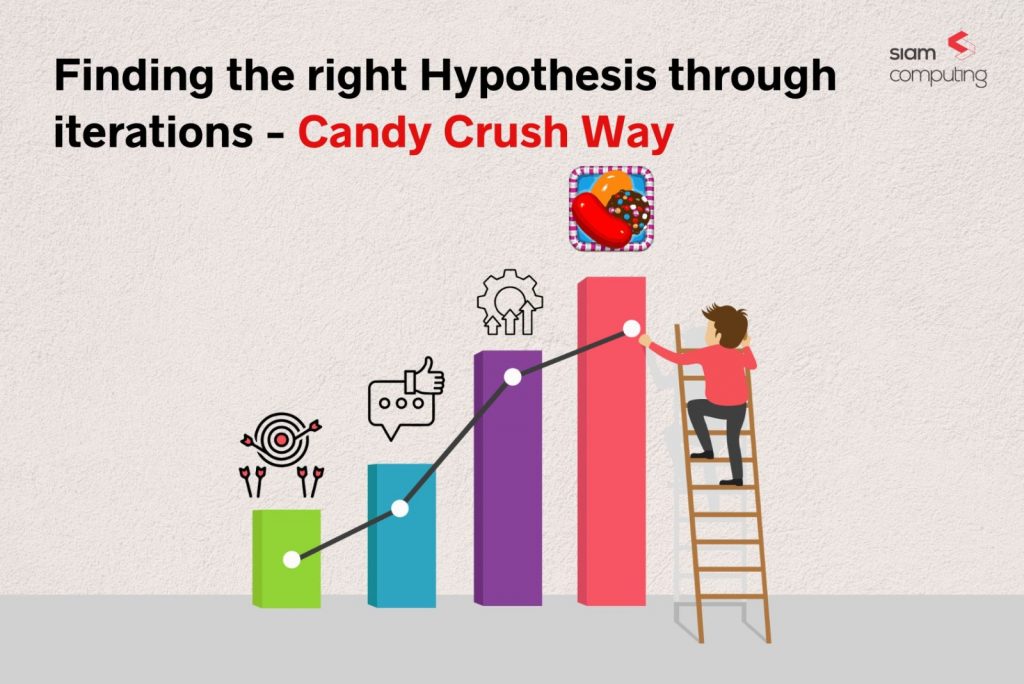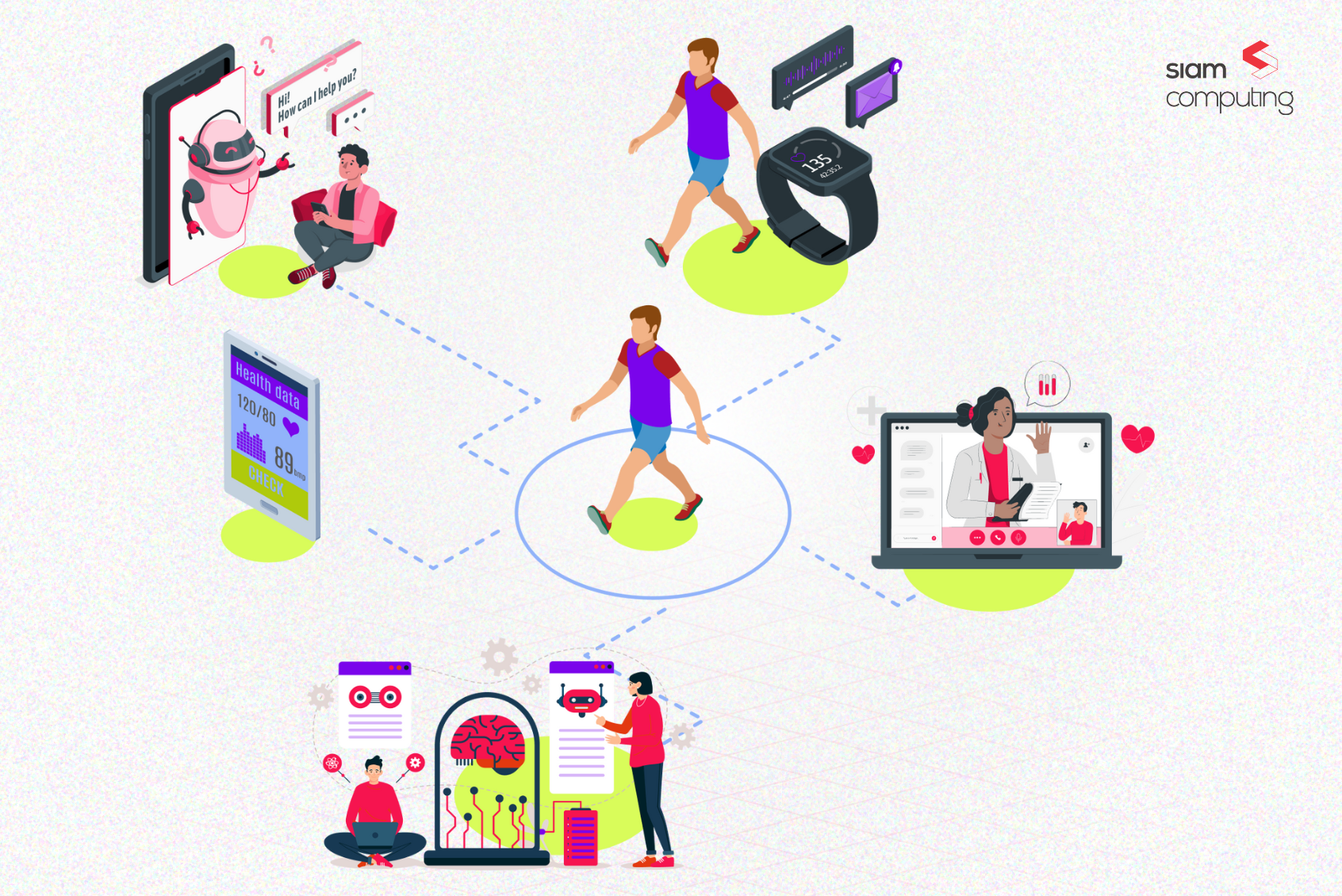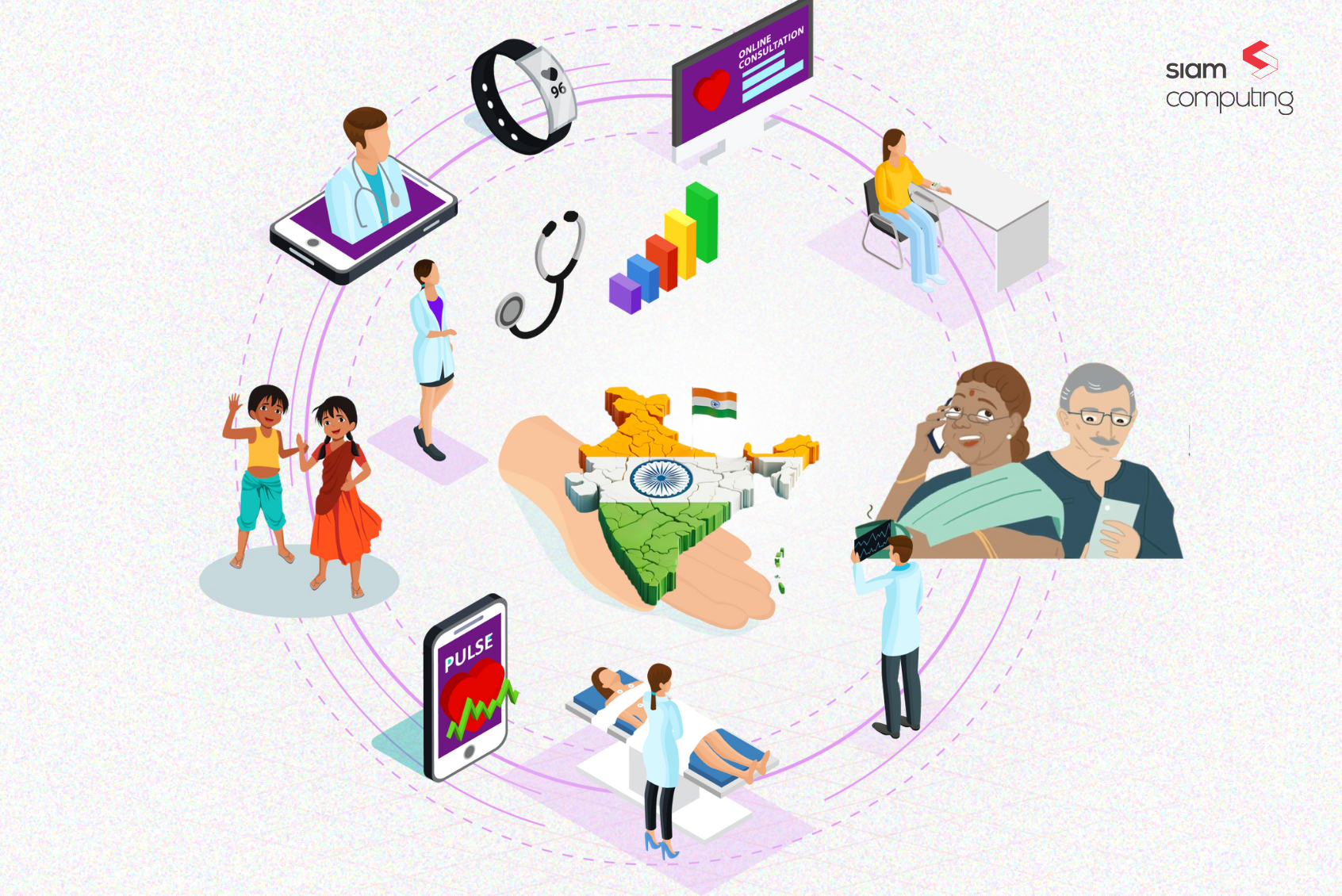When you develop a new product, it’s easy to get caught up in the excitement of bringing an idea to life. But to increase the chances of your product’s success, it’s important to clearly define your assumptions, propose a hypothesis, and validate it.
Take the pivotal discovery of the light bulb as an example. Edison had a clear hypothesis that light could be produced by passing electricity through a carbon filament, and he validated it by conducting thousands of systematic experiments.
Unlike Edison, product founders building digital solutions do not have the luxury of time to validate their hypotheses. Luckily, the Lean Product methodology gives us the directions to validate our hypotheses quickly with a minimal viable product (MVP).
But how exactly can we formulate and validate a hypothesis for your digital product, and what are the steps to do it? Find the answers in this article – with examples from Candy Crush, Dunzo, and Google.
Consequences of not having a Hypothesis-driven Product Development process
Founders working in a resource-constrained environment or having over-confidence in their idea may sometimes deviate from their key hypothesis or abandon the hypothesis testing entirely while building their product.
However, failing to take this approach has its own perils:
- Firstly, it will never let you know if the problem you’re looking to solve with your product actually exists or not.
- It will also keep you from measuring your outcomes and the number of hypothesis you need to test to build your MVP. Consequently, it will negatively affect your overall planning and budgeting.
- You will constantly have to deal with unquantifiable risk without evaluating if the next level of investment in your product is valid.
- All your efforts may be wrongly directed, leading to the ultimate failure of your product.
This was precisely what happened in the case of Google Wave in 2009. Google Wave was a platform for real-time communication and collaboration. However, its makers failed to validate their hypothesis that there was a need for a new way of collaborating online (we are talking about pre-pandemic times here when WFH was unheard of).
Not having clear use cases for the platform and not testing it with users before the launch caused confusion and frustration among users, leading it to be discontinued the following year.
Google Glass also met with the same fate. It was a device that could be worn as a pair of glasses to display information and perform tasks through voice commands.
The product failed as a result of Google’s failure to clearly define the hypothesis about the exact problem the device was solving. Besides, a lack of clarity on the targetted user base and not seeking validation from user groups led to its complete failure.
It is evident from both cases that a hypothesis-driven approach would have prevented these expensive failures by allowing the product developers to identify potential problems, seek validation from target users, and make adjustments accordingly before launching the product.
Key steps to Formulate and Validate your Hypothesis – Dunzo Case Study
With the examples above, we’ve seen that building sand castles based on just your ideas could prove to be a costly mistake, even for a company like Google. Now let’s look at Dunzo and how they approached product development step-by-step, the scientific way.

Identifying the problem
Focussing on the ‘why’ before the ‘how’ will help you identify the exact problem your product will solve or the exact vacuum it will fill so that you can develop your MVP accordingly.
In the case of Dunzo, its founder Kabeer sensed a market gap in the delivery space for people who needed intra-city pickups or delivery of any item, not just food or grocery. Having identified this problem, he thought of building a platform to do this.
Gathering information
You need to understand the needs of your potential customers and the state of the market your product will enter. This is the context in which your product will be placed. With the help of market research, Dunzo could understand the gaps it was expected to fill in the marketplace and tap into potential areas of improvement for its product to thrive.
Formulating a Hypothesis
Leveraging your knowledge of the existing market and the needs of potential customers will help you formulate a hypothesis to run experiments for getting decisive answers about your customer’s willingness to pay for your product and the features they will be willing to pay for.
Dunzo, equipped with their market research, formulated the hypothesis that users would be willing to pay substantially reasonable rates for getting their daily tasks done with improved communication and efficiency.
Running experiments to test the hypothesis
Dunzo started as a normal WhatsApp group that facilitated effective delivery services to be carried out. Kabeer, Dunzo’s founder, carried out the deliveries himself until orders began pouring in for him, requiring a team to do it. He hired part-time employees to finish the tasks before considering developing it as an app-based business.
Validating the Hypothesis
This is where MVP development comes into the picture. Most people think we must build an MVP after validating the hypothesis. But, the actual role of an MVP is to validate your hypothesis. Validating your hypothesis with a Minimal Viable Product will allow you to make adjustments to maximize your intended goals.
Dunzo’s MVP allowed them to analyze the response to their service to track the sales and customer feedback for the app. This allowed them to make incremental adjustments to their platform to deliver better customer experience.
Drawing conclusions
Drawing conclusions based on the validation of your key hypothesis will give you the confidence to develop a product for which there is an actual need and a willingness among customers to pay for it. This understanding will also help you drop features that are not needed and scale your product in areas that yield good returns.
Dunzo concluded that their hypothesis was correct and that customers were actually willing to pay for a service that helped them in their daily chores. Their future services were informed by this understanding as well as they discontinued other non-essential services in their MVP, like secretarial chores, home services, or tasks involving the government, to just focus on the delivery sector.
Finding the Right Hypothesis Through Iterations – The Candy Crush way
No, we are not asking you to play Candy Crush until you find the right hypothesis. But, there’s something to learn from this hugely popular game.

In the previous sections, we mentioned the key steps to formulate and validate your hypothesis. While following these steps you might often find yourself going back to your drawing board time and again to find the right hypothesis to build a successful product or to modify your existing hypothesis to adapt to current market requirements.
Don’t be disheartened here, because this process of iteration is completely natural in product development, and it helps you cut down ideas that do not work, thereby saving you development time and cost in the future.
Let’s look at how Candy Crush climbed the ladder of iterations to become the beloved game it is today
The first version of Candy Crush with three minutes of “great gaming” in the words of its maker, had no means to evolve in the absence of “any sense of progression”.
Candy Crush, developed by King, improved through iterative hypothesis testing. Initially, the creators hypothesized that a match-three puzzle game with colorful graphics would appeal to mobile gamers. However, it did not, and it had user churn.
They then gathered player feedback and data to refine the game. Hypotheses were tested regarding social features, leading to the implementation of friend competitions and progress sharing. Iterative improvements were made to the game’s monetization strategy, adjusting in-app purchases for boosters and lives.
New levels, challenges, and mechanics were introduced based on hypotheses about player engagement. This iterative approach helped Candy Crush become a global phenomenon, with millions of players and substantial revenue.
The key to success is your ability to build up on your failed attempts by learning something from each of them. That’s how Candy Crush continued to take an intentional experimentation approach to reach a better position to discover ways to improve their product and make the most of their carefully designed MVPs.
You must learn to see your MVP with a product lens as an ongoing process to course correct by identifying your riskiest assumptions and testing them with the smallest possible experiment. You’ll have to go back to where you started repeatedly to identify assumptions that work.
Benefits of the Hypothesis-driven Approach
The process of building a great product should start by defining and validating your key hypotheses before setting out to build an MVP. This will work to your benefit by:
- Letting you get a complete grasp of what exactly is needed, and what is not – Like Dunzo boiling down to focus on key delivery services and doing away with other domains.
- Prioritizing efforts on the most pressing needs of the hour rather than on something which needs little effort – Like Candy Crush trying to hook players to return to the game by providing social validation.
- Getting complete control of the process of building a product by moving it from the chance to real working facts – Like Edison monitoring the impact of each filament until he arrived at the perfect one.
Stumbling on the Right Product vs Arriving at it
Edison was the torch-bearer of a hypothesis-driven approach to arrive at the right product. We have come a long way from Edison’s lightbulb to Dunzo and Candy Crush today.
The one thing that all these products have in common is the use of the hypothesis-driven approach and intentional experimentation to prove their chances of success and reduce the risks of failure.
On the other hand, products like Google Lens and Google Wave lacked a clear direction and sense of purpose. That’s because they were launched in the hope that their product would stumble upon a solution that it could solve for the people.
Final Thoughts
A great product is not the one that makes its way to the users in the least possible time. It is the one that takes the necessary time to understand its core purpose and works as a way to provide value to its users. It is an organic process of starting with the hypothesis and validating it with your MVP.
An MVP lets you validate your idea with the least possible time and effort. Still, the MVP has to be built to give you exact answers rather than confuse you. We’ve helped several companies validate their hypotheses with an MVP. If you would like us to help you validate your idea or hypothesis, reach out to us.








